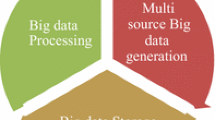Abstract
Large amount of personal social information is collected and published due to the rapid development of social network technologies and applications, and thus, it is quite essential to take privacy preservation and prevent sensitive information leakage. Most of current anonymizing techniques focus on the preservation to privacies, but cannot provide accurate answers to utility queries even at a high price. To solve the problem, a novel anonymizing approach, called splitting anonymization, is introduced in this paper to point against the contradiction of privacy and utility. This approach provides a high-level preservation to the privacy of social network data that is unknown to attackers, which avoids the low utility caused by the enforced noises on knowledge that is already known to the attackers. Social network processed by splitting anonymization can refuse any direct attack, and these strategies are also safe enough to indirect attacks which are usually more dangerous than direct attacks. Finally, strict theoretical analysis and large amount of evaluation results based on real data sets verified the design of this paper.










Similar content being viewed by others
References
Wu X (2004) Data mining: artificial intelligence in data analysis. Intelligent agent technology, 2004 (IAT 2004). In: Proceedings of IEEE/WIC/ACM international conference on, p 7, 20-24 Sept. 2004. doi:10.1109/IAT.2004.1342916, http://ieeexplore.ieee.org/stamp/stamp.jsp?tp=&arnumber=1342916&isnumber=29567
Srivastava J (2008) Data mining for social network analysis. Intelligence and security informatics, 2008. ISI 2008. IEEE international conference on, pp xxxiii–xxxiv, 17–20 June 2008. doi:10.1109/ISI.2008.4565015, http://ieeexplore.ieee.org/stamp/stamp.jsp?tp=&arnumber=4565015&isnumber=4565003
Jamali M, Abolhassani H (2006) Different aspects of social network analysis. Web intelligence, 2006. WI 2006. IEEE/WIC/ACM international conference on, pp 66–72, 18–22 Dec. 2006. doi:10.1109/WI.2006.61, http://ieeexplore.ieee.org/stamp/stamp.jsp?tp=&arnumber=4061343&isnumber=4061322
Narayanan A, Shmatikov V (2009) De-anonymizing Social Networks. In: IEEE symposium on security and privacy, pp 173–187
Song W, Zhang Y, Bai W (2010) Anonymizing path nodes in social network. Database technology and applications (DBTA), 2010 2nd international workshop on, pp 1–4, 27–28 Nov. 2010. doi:10.1109/DBTA.2010.5658931, http://ieeexplore.ieee.org/stamp/stamp.jsp?tp=&arnumber=5658931&isnumber=5658597
Zhu Y, Huang L, Yang W, Li D, Luo Y, Dong F (2009) Three new approaches to privacy-preserving add to multiply protocol and its application. Knowledge discovery and data mining, 2009. WKDD 2009. Second international workshop on, pp 554–558, 23–25 Jan. 2009. doi:10.1109/WKDD.2009.34, http://ieeexplore.ieee.org/stamp/stamp.jsp?tp=&arnumber=4771997&isnumber=4771855
Tassa T, Cohen D Anonymization of centralized and distributed social networks by sequential clustering. Knowl Data Eng IEEE Trans (99):1, 0. doi:10.1109/TKDE.2011.232, http://ieeexplore.ieee.org/stamp/stamp.jsp?tp=&arnumber=6081867&isnumber=4358933
Sweeney L (2002) k-anonymity: a model for protecting privacy. Int J Uncertain Fuzziness Knowl-Based Syst 10(5):557–570. doi:10.1142/S0218488502001648, http://arbor.ee.ntu.edu.tw/archive/ppdm/Anonymity/SweeneyKA02.pdf
Hay M, Miklau G, Jensen D, Towsley DF, Li C (2010) Resisting structural re-identification in anonymizedsocialnetworks. VLDB J 19(6):797–823
Hay M, Miklau G, Jensen D, Towsley DF, Weis P (2008) Resisting structural re-identification in anonymizedsocialnetworks. PVLDB 1(1):102–114
Campan A, Truta T (2008) A clustering approach for dataand structural anonymity in social networks. In: PinKDD, pp 33–54
Tassa T, Cohen D (2013) Anonymization of centralized and distributed social networks by sequential clustering. IEEE Trans Knowl Data Eng 25(2):311–324
Cormode G, Srivastava D, Bhagat S, Krishnamurthy B (2009) Class-based graph anonymizationforsocial network data. PVLDB 2(1):766–777
Cormode G, Srivastava D, Yu T, Zhang Q (2008) Anonymizing bipartite graph data using safe groupings. PVLDB 1(1):833–844
Zheleva E, Getoor L (2007) Preserving the privacy of sensitive relationships in graph data. In: Bonchi F, Malin B, Saygin Y (eds) PinKDD 2007, vol 4890. Springer, Heidelberg, pp 153–171
Liu K, Terzi E (2008) Towards identity anonymizationongraphs. In: SIGMOD conference, pp 93–106
Zhou B, Pei J (2008) Preserving privacy in social networks against neighborhood attacks. In: ICDE 2008, pp 506–515
Thompson B, Yao D (2009) The union-split algorithm and cluster-based anonymization of social networks. In: ASIACCS, pp 218–227
Zou L, Chen L, Özsu MT (2009) K-automorphism: ageneral framework for privacy preserving networkpublication. PVLDB 2(1):946–957
Wu W, Xiao Y, Wang W, He Z, Wang Z (2010) k-Symmetry model for identity anonymization in socialnetworks. In: EDBT, pp 111–122
Hay M, Miklau G, Jensen D, Weis P, Srivastava S (2007) Anonymizing social networks. Computer science department faculty publication series, p 180
Hochba D (1997) Approximation algorithms for NP-Hard problems. SIGACT News 28(2):40–52
Zou L, Chen L, Tamer Özsu M (2009) Distance join: pattern match query in a large graph database international conference on very large data bases, VLDB
Zou L, Chen L, Tamer Özsu M, Zhao D (2012) Answering pattern match queries in large graph databases via graph embedding. VLDB J 21(1):97–120
Zou L, Mo J, Chen L, Tamer Özsu M, Zhao D (2011) gStore: answering SPARQL queries via subgraph matching international conference on very large data bases, VLDB
Xifeng Y, Yu PS, Han J (2004) Graph indexing: a frequent structure-based approach. In: Proceedings of the 2004 ACM SIGMOD international conference on management of data. ACM
Zheng W, Zou L, Feng Y, Chen L, Zhao D (2013) Efficient sim rank-based similarity join over large graphs international conference on very large data bases, VLDB
Acknowledgments
This work is supported in part by the NSFC (61202087, 61332006, U1401256, 61328202); the Fundamental Research Funds for the Central Universities (Grant Nos. N120404012, N130504006); the Key Projects in the National Science & Technology Pillar Program No. 2014BAI17B02-03, and the Open Foundation of WUHAN University No. SKLSE2012-09-40.
Author information
Authors and Affiliations
Corresponding author
Rights and permissions
About this article
Cite this article
Sun, Y., Yuan, Y., Wang, G. et al. Splitting anonymization: a novel privacy-preserving approach of social network. Knowl Inf Syst 47, 595–623 (2016). https://doi.org/10.1007/s10115-015-0855-2
Received:
Revised:
Accepted:
Published:
Issue Date:
DOI: https://doi.org/10.1007/s10115-015-0855-2




